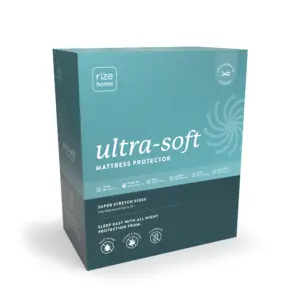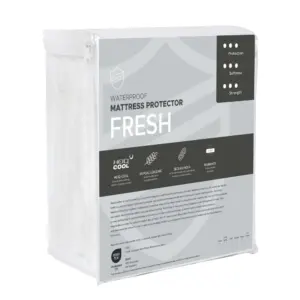An Essential Guide to Understanding Mattress Flammability
Are Mattresses Flammable? The Facts You Need to Know
Are mattresses flammable? The answer is a resounding yes. In fact, mattresses can easily catch fire, posing serious safety risks. Composed of combustible materials like foam and various fabrics, they can ignite almost instantaneously, rapidly creating a dangerous situation in a bedroom or home. Understanding this risk is crucial for informed decision-making when it comes to bedroom safety.
Flammable Materials in Mattresses
Let’s explore why mattresses can be flammable. Many standard mattresses are made from materials such as polyurethane foam, polyester, and other synthetic fabrics. These substances can ignite quickly, especially in open flame or high-heat environments. Polyurethane foam, for example, is derived from crude oil and features a high energy content, which increases its combustibility. In the unfortunate event of a fire, a mattress serves as a significant fuel source, exacerbating the spread of flames.
Given these risks, it’s imperative to understand the ingredients of your mattress. A few simple precautions can go a long way in enhancing your safety at home.
The Role of Fire Retardants
To mitigate these risks, manufacturers incorporate fire retardants into their mattresses. These chemicals slow the combustion rate, providing critical extra time for occupants to escape during a fire emergency. While fire retardants are essential, it’s important to note they are not designed to make a mattress completely fireproof. Instead, they significantly decrease the likelihood and severity of fires.
However, some fire retardants have attracted attention due to health concerns. For instance, substances like fiberglass can create risks of exposure, particularly if the casing is damaged. When selecting a mattress, ensure that it uses safe and effective fire retardants to protect your health while achieving safety.
Regulations for Mattress Safety
The Consumer Product Safety Commission (CPSC) is instrumental in regulating mattress flammability. Since 2007, the CPSC has enforced safety standards—most notably 16 CFR Part 1633, which requires all mattresses sold in the United States to meet specific flammability criteria. These regulations significantly lower fire-related injuries and fatalities. In fact, data shows that since these standards were enacted, home fire injuries have decreased by 34% and fire-related deaths by a staggering 82%.
This evolving landscape of safety standards means that consumers now have greater access to safer mattress options. Familiarizing yourself with these regulations is key when making a purchase.
Understanding Mattress Fire Hazards
When pondering the question, Are mattresses flammable? it’s vital to recognize various fire hazards associated with them. Here are some common ignition sources that pose a threat:
– Matches and Lighters: An accidental flame can rapidly ignite a mattress.
– Burning Furniture: If other flammable objects in the room catch fire, flames can quickly spread to your mattress.
– Electrical Equipment: Faulty wiring, space heaters, or other electrical devices can easily ignite a mattress, especially when placed too close.
One tragic trend is cigarette fires—smoking in bed is particularly hazardous. According to the National Fire Protection Association, smoking has long been a leading cause of home fire fatalities. In 2016 alone, smoking-related fires accounted for 660 deaths. Avoiding smoking in the bedroom is crucial for reducing fire risks.
Tips for Bedroom Safety
To enhance bedroom safety and minimize the chances of a mattress fire, consider the following preventive measures:
– Install Smoke Alarms: Equip bedrooms with smoke alarms and test them monthly to ensure they function properly.
– Keep Flammables at Bay: Maintain a safe distance between your mattress and potential ignition sources such as candles, heaters, or electrical cords.
– Educate Family Members: Teach children about fire safety and the importance of keeping lighters and matches out of reach.
– Have an Escape Plan: Create a well-rehearsed escape plan and discuss it regularly with family members to prepare for emergencies.
Implementing these safety tips will dramatically reduce the risk of a mattress fire.
Choosing a Safe Mattress
Making informed choices when purchasing a mattress includes considering materials, certifications, and eco-friendly options. When it comes to safety, opting for mattresses made with organic materials is a smart choice. Look for:
– Organic Cotton: Breathable and free from harmful chemicals.
– Wool: Naturally flame-resistant, it’s effective at slowing fire spread.
– Natural Latex: Made from rubber tree sap, it excels in durability and comfort without synthetic additives.
These materials not only enhance safety but also contribute to better health outcomes.
Certifications to Look For
When considering mattress options, certifications can provide assurance that products meet high safety and environmental standards. Key certifications to seek include:
– GOTS (Global Organic Textile Standard): Confirms that the mattress is made using organic fibers.
– GOLS (Global Organic Latex Standard): Ensures that latex is organic and responsibly harvested.
– CertiPUR-US: Verifies that the foam within the mattress is free from harmful chemicals like formaldehyde and heavy metals.
Such certifications help you select a mattress that aligns with both safety and environmental standards.
The Road Ahead: Selecting the Right Mattress
By understanding mattress flammability and taking the necessary precautions, you can create a safer sleeping environment for you and your loved ones. When selecting a mattress, prioritize choices that incorporate natural fire retardants and adhere to government safety regulations.
At Yawnder, we emphasize the importance of both comfort and safety in mattress selection. Our commitment to sustainable practices allows us to offer options that not only protect your health but also that of our planet. By educating yourself and making informed decisions, you can ensure sound sleep alongside peace of mind.
In summary, being aware of the potential risks of mattress flammability empowers you to take the necessary steps for improved safety in your home. Understanding how to choose a safer mattress will go a long way in ensuring restful, worry-free nights.

















